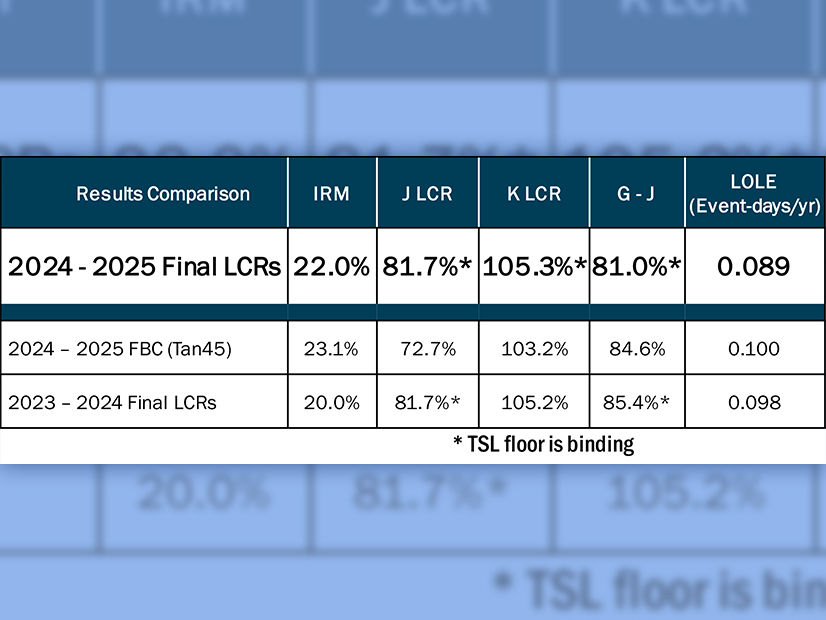
NYISO’s Operating Committee on Jan. 18 approved the final locational minimum installed capacity requirements (LCRs) for the 2024/25 capability year.
The LCRs represent the minimum amount of capacity that New York load-serving entities must maintain within each of three downstate “localities” with transmission constraints. They are expressed as the percentage of the peak load forecast: 81.7% for New York City (Zone J), 105.3% for the rest of Long Island (Zone K) and 81% for the Lower Hudson Valley, including the city (zones G to J).
As detailed by the ISO’s LCR Study, the figures were calculated using the 22% installed reserve margin (IRM) approved by the New York State Reliability Council late last year, and transmission security limits (TSL) floors, which, respectively, establish the required reserve capacity and minimum transmission limits necessary for reliable operations.
Because the figures had already been presented to stakeholders, the OC’s vote proceeded without significant discussion. (See “Final LCR Results,” NYISO Finds No Need for New Capacity Zones.)
NYISO will now publish the final LCR values online, along with the 2024/25 locality bulk power transmission capability report, which documents the transmission capability inputs required to establish the TSLs for each locality.
December Operations
Aaron Markham, NYISO vice president of operations, told the OC that “December was quite a mild month, with no real cold snaps,” which resulted in “a pretty low peak load” of 21,001 MW and a minimum load of 13,136 MW.
In his December operations presentation, Markham noted that New York had added 215 MW of land-based wind and 20 MW of front-of-the-meter solar resources since the previous month’s report. (See NYCA Surpasses 5,000 MW of Installed BTM Solar.)
Markham last mentioned that New York is “in the midst of its first cold snap of 2024.” This led to a peak load Jan. 17 of 22,754 MW, which was about 94% of the baseline forecast of 24,200 MW for the winter season. However, he added that “transmission and generator performance has been very good” during this period.
